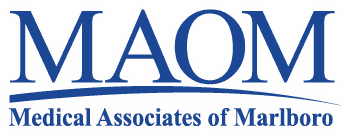Stroke
Basic Facts
- A stroke is the interruption of the blood supply to the brain that is caused by a blockage or bleeding in the brain.
- Stroke is the leading cause of permanent disability in the United States.
- Many of the risk factors for stroke can be controlled or eliminated.

There are two types of stroke:
- Ischemic stroke, when an artery to the brain becomes blocked; and
- Hemorrhagic stroke, when a blood vessel bursts inside the brain.
Ischemic stroke is the most common type. Blockages can occur if major arteries in the neck or the arteries in the brain become blocked by plaque buildup, pieces of plaque, or blood clots.
Approximately 10 to 15 percent of strokes are hemorrhagic. In hemorrhagic stroke, a blood vessel inside the brain leaks or bursts. Hemorrhagic strokes are more deadly than ischemic strokes.
WHAT ARE THE SYMPTOMS?
Most stroke-related brain damage occurs within a few hours of the onset of symptoms. Patients who experience any of the following symptoms should seek help immediately.
Stroke symptoms vary, but generally occur suddenly and include:
- Partial loss of vision in one eye;
- Weakness, tingling, or numbness in a limb;
- Temporary loss of control of movement in a limb;
- Inability to pronounce words or speak clearly;
- Unsteadiness, vertigo, double vision, or drop attacks (sudden falls);
- Sudden difficulty swallowing;
- Memory loss;
- Loss of balance;
- Personality or mood changes;
- Drowsiness or loss of consciousness; or
- Uncontrollable eye movements or eye drooping.
Hemorrhagic strokes are more likely than ischemic strokes to cause the following symptoms:
- Sudden and severe headache;
- Nausea or vomiting; and
- Seizures.
CAUSES AND RISK FACTORS
Atherosclerosis is the most common cause of ischemic stroke.
Transient ischemic attack (TIA), or mini-stroke, is an important stroke risk factor.
Causes of hemorrhagic stroke include:
- Hypertension;
- Aneurysms;
- Arteriovenous malformations;
- Brain tumors;
- Blood clotting disorders;
- Anticoagulant medications;
- Head injuries; and
- Cocaine use.
Risk factors for strokes include:
- Advanced age;
- Male gender;
- Pregnancy;
- African American race;
- Having an immediate family member who has had a stroke;
- Having had a prior heart attack or stroke;
- Smoking;
- Artery disease;
- Diabetes mellitus;
- Heart disease;
- High cholesterol;
- Alcohol or drug abuse; and
- Obesity and lack of exercise.
DIAGNOSIS
To diagnose stroke, the physician will obtain a detailed description of the patient's symptoms and perform a physical examination and a neurological examination.
Tests the physician may order include:
- Computed tomography (CT) scan;
- Magnetic resonance imaging (MRI);
- Angiography;
- Ultrasound;
- Blood tests; and
- Electroencephalogram (EEG).
TREATMENT APPROACH
Patients who experience stroke are usually treated in the intensive care unit.
Physicians treat ischemic and hemorrhagic strokes differently. Physicians attempt to remove the blockage involved in ischemic strokes. Physicians try to create an obstruction in the damaged blood vessel to stop bleeding in hemorrhagic stroke.
For ischemic stroke, the physician may perform thrombolysis, but it must occur shortly after the onset of a stroke.
Endovascular treatments for ischemic stroke are being studied.
Treatments to prevent ischemic stroke include:
- Controlling hypertension and cholesterol;
- Anticoagulant or antiplatelet medications;
- Angiotensin-converting enzyme (ACE) inhibitors;
- Carotid endarterectomy; and
- Carotid stenting.
To treat hemorrhagic strokes, physicians may use hyperosmotic agents to reduce swelling in the brain as well as anti-seizure medications.
After the patient is stabilized, surgery or minimally invasive procedures are performed to stop the bleeding. Treatments include:
- Hematoma removal;
- Aneurysm clipping;
- Endovascular aneurysm treatment;
- Surgery to remove an arteriovenous malformation;
- Embolization or radiotherapy; and
- Placing a shunt or performing a ventriculostomy.
LIFESTYLE
Behavior modifications to decrease stroke risk include:
- Quitting smoking;
- Losing weight;
- Exercising regularly;
- Controlling high blood pressure and cholesterol; and
- Reducing alcohol intake.
Copyright © 2017 NorthPoint Domain, Inc. All rights reserved.
This material cannot be reproduced in digital or printed form without the express consent of NorthPoint Domain, Inc. Unauthorized copying or distribution of NorthPoint Domain's Content is an infringement of the copyright holder's rights.
